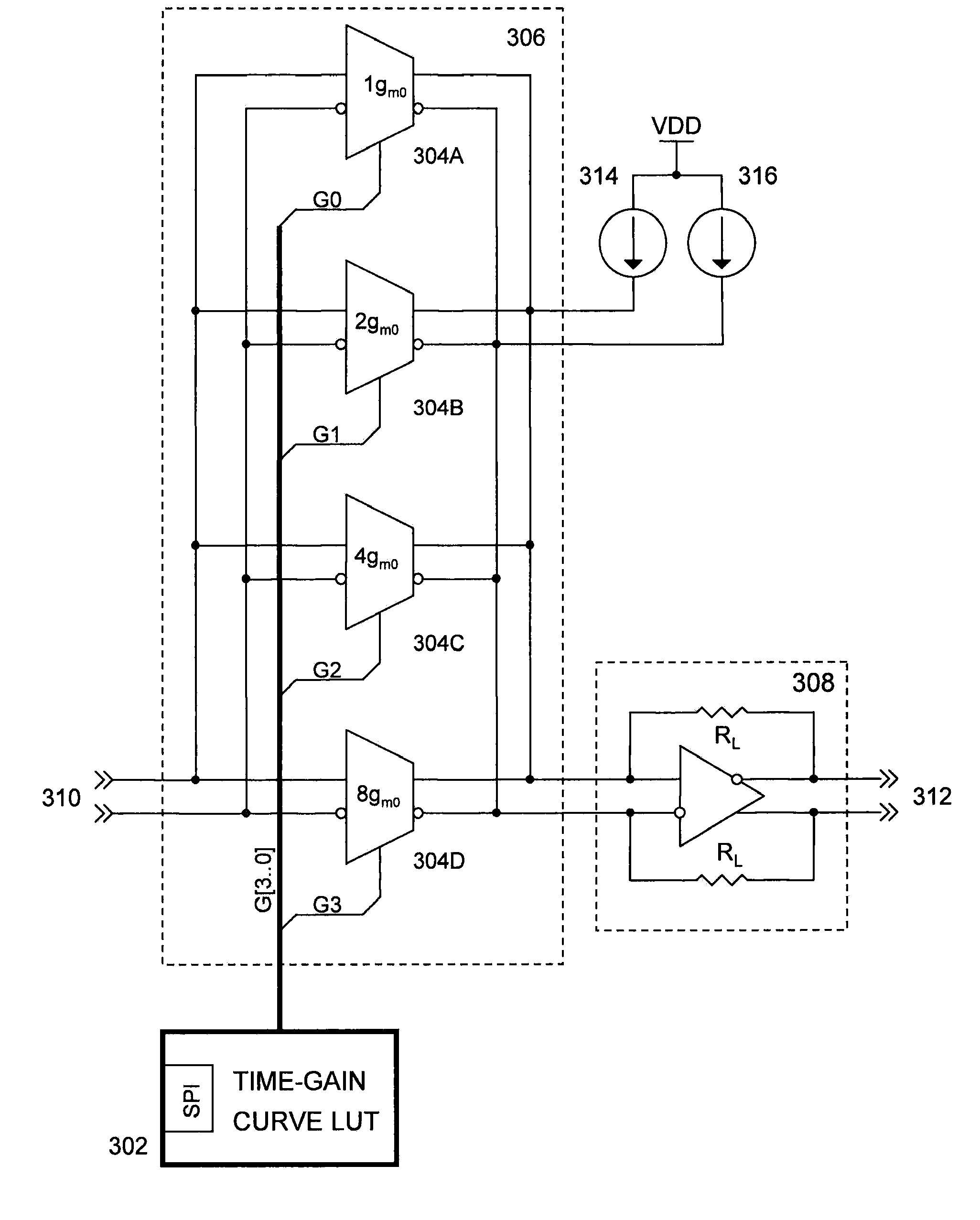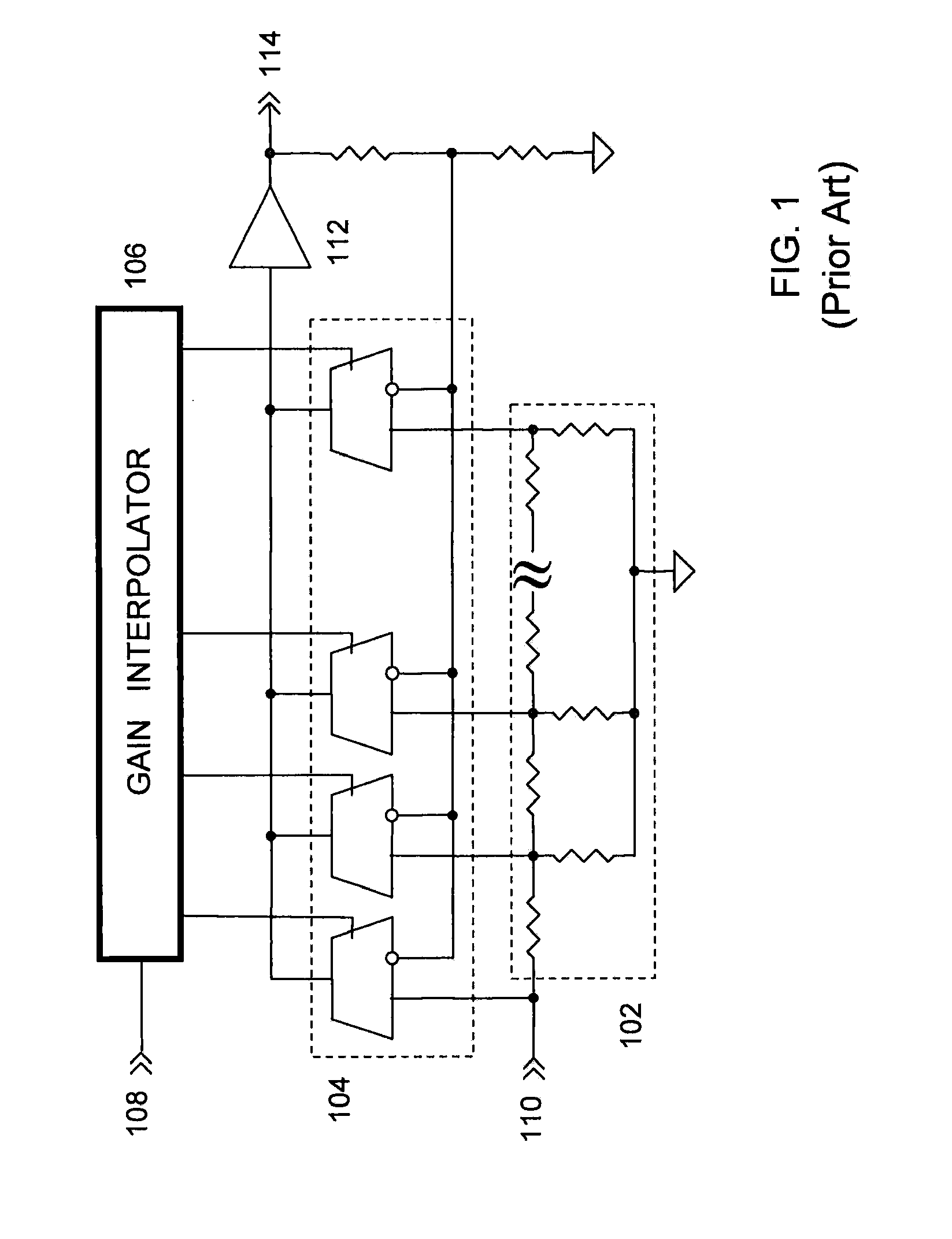Low noise binary-coded gain amplifier and method for time-gain compensation in medical ultrasound imaging
a binary-coded gain amplifier and ultrasound imaging technology, applied in the field of low-noise amplifiers, can solve the problems of signal-to-noise ratio (snr) degradation in doppler modalities, use of resistors in programmable gain amplifiers of this kind, and increase the gain of receiving channels
- Summary
- Abstract
- Description
- Claims
- Application Information
AI Technical Summary
Benefits of technology
Problems solved by technology
Method used
Image
Examples
Embodiment Construction
The following sections will discuss an improved low noise VGA, which gain is directly controlled by an external N-bit-wide word allowing to obtain 2N−1 gain levels within a given gain range. A description of the present invention is given with reference to FIGS. 3-6.
FIG. 3 is a functional block diagram showing the relationship between the elements of the VGA of the present invention. Referring to the diagram, the VGA comprises a differential input port 310 for receiving signals generated e.g. by a transducer, such as a piezoelectric transducer of an ultrasound medical imaging device, two identical current sources 314 and 316, a differential programmable transconductor 306 loaded by said current sources and connected to a differential transimpedance amplifier (that is, a current-to-voltage converter) 308 having a differential output port 312, and a look-up-table (LUT) 302 for storing a set of time-gain curves.
As it will be shown later in detail, the programmable transconductor 306 of...
PUM
 Login to View More
Login to View More Abstract
Description
Claims
Application Information
 Login to View More
Login to View More - R&D
- Intellectual Property
- Life Sciences
- Materials
- Tech Scout
- Unparalleled Data Quality
- Higher Quality Content
- 60% Fewer Hallucinations
Browse by: Latest US Patents, China's latest patents, Technical Efficacy Thesaurus, Application Domain, Technology Topic, Popular Technical Reports.
© 2025 PatSnap. All rights reserved.Legal|Privacy policy|Modern Slavery Act Transparency Statement|Sitemap|About US| Contact US: help@patsnap.com



